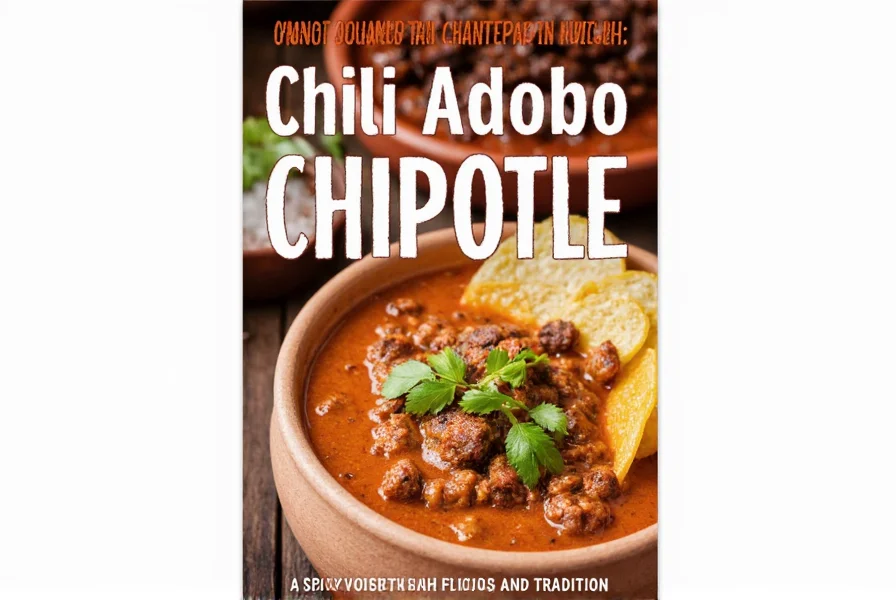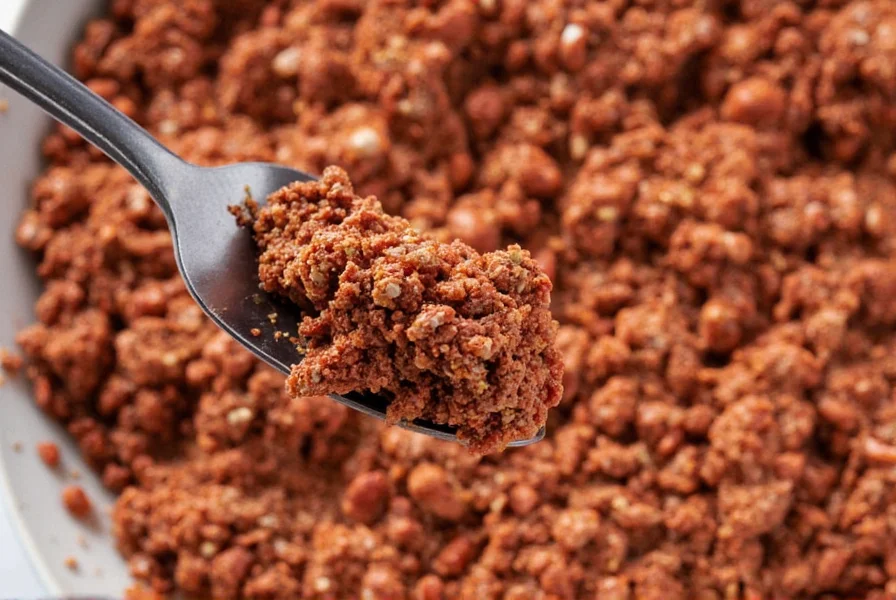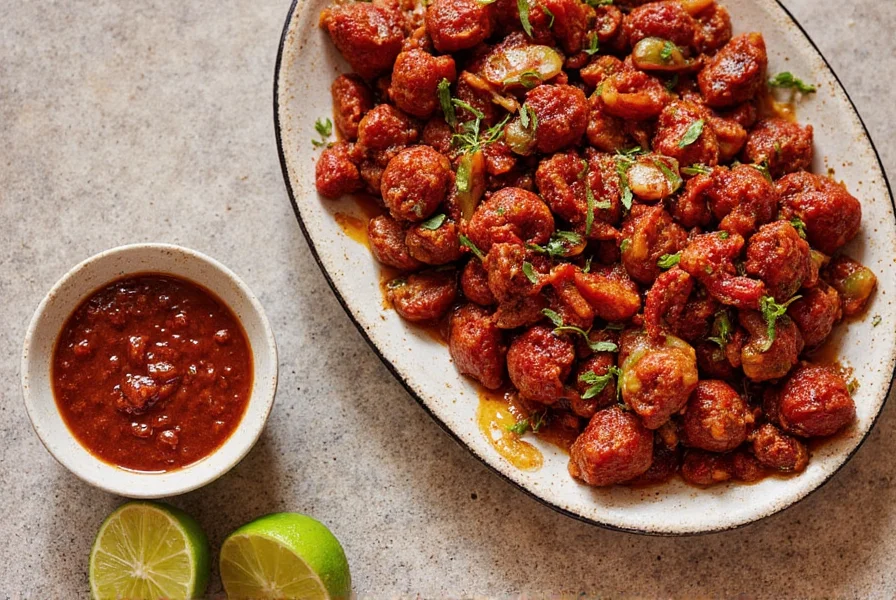Chili adobo chipotle is a smoky, tangy Mexican chili paste made from smoked jalapeños in a tomato-based sauce. It's a versatile ingredient that adds depth and heat to dishes like tacos, stews, and marinades. In this guide, you'll learn exactly what it is, how to use it, where to buy the best brands, and expert tips for cooking with it.
Table of Contents
- What Is Chili Adobo Chipotle?
- The History of Chili Adobo Chipotle
- How to Use Chili Adobo Chipotle
- Practical Tips for Cooking With Chili Adobo Chipotle
- Buying Guide for Chili Adobo Chipotle
- Frequently Asked Questions
- Conclusion
What Is Chili Adobo Chipotle?
Chili adobo chipotle is a type of Mexican chili paste made from smoked, dried jalapeño peppers (known as chipotles) that are rehydrated and blended with adobo sauce. The adobo sauce is typically made from tomatoes, garlic, vinegar, and a variety of spices, giving the paste its signature smoky, tangy, and slightly sweet flavor profile. It's widely used in Mexican and Latin American cuisines to add depth and heat to dishes like tacos, stews, sauces, and marinades. According to professional chefs from Food Network and Serious Eats, this ingredient is essential for authentic smoky flavors in home cooking.

Key Features of Chili Adobo Chipotle
- Smoky Flavor: The smoking process gives it a deep, rich taste.
- Tangy and Sweet: The adobo sauce adds a balance of acidity and sweetness.
- Spicy Heat: Depending on the variety, it can range from mild to very hot (typically 2,500-8,000 Scoville units).
- Versatile: Works well in both cooked and raw applications.
The History of Chili Adobo Chipotle
The origins of chili adobo chipotle trace back to indigenous peoples of Mexico, who used chilies for centuries. The term "chipotle" comes from the Nahuatl word *chilpotl*, meaning "smoked chili." Originally, peppers were sun-dried and smoked over wood fires. The addition of adobo sauce—derived from the Spanish word *adobar* (to season)—evolved in traditional recipes. Today, it's a global favorite in street food to high-end restaurants, as documented by culinary historians at the Smithsonian Institute.

How to Use Chili Adobo Chipotle
One of the most appealing things about chili adobo chipotle is its versatility. Here are professional chef-recommended ways to incorporate it:
- Marinade: Mix with olive oil, lime juice, and cumin for chicken or pork (e.g., Chipotle Lime Chicken Tacos).
- Sauce: Blend with Greek yogurt, lime, and cilantro for a cooling chipotle ranch dressing.
- Stew Base: Add to black bean soup or chili for deep, smoky richness.
- Condiment: Use as a topping for burgers, eggs, or roasted sweet potatoes.
- Glaze: Combine with honey for a sweet-spicy glaze on grilled salmon or carrots.
- Specialty Recipe: Try it in chocolate mole sauce for complex Mexican-inspired desserts.

Practical Tips for Cooking With Chili Adobo Chipotle
Follow these expert tips from culinary professionals for best results:
- Start Small: Begin with 1/2 teaspoon per serving and adjust—chipotle heat builds over time.
- Balance Heat: Add dairy (like sour cream) or acid (lime juice) to tame spice without losing flavor.
- Pair Smartly: Complement with sweet ingredients (honey, mango) or earthy flavors (cumin, smoked paprika).
- Storage: Keep opened jars refrigerated in airtight containers; freeze in ice cube trays for portion control.
- Substitute: For missing chipotle, use 1 tsp smoked paprika + 1/4 tsp cayenne + 1 tsp tomato paste.
Buying Guide for Chili Adobo Chipotle
When shopping, prioritize quality, heat level, and versatility. Here's a detailed comparison of top brands based on professional chef reviews and consumer feedback:
| Product Name | Heat Level (Scoville) | Texture | Price Range | Best For | Where to Buy | Expert Rating |
|---|---|---|---|---|---|---|
| Las Palmas Chipotle Paste | Medium (3,000-5,000) | Smooth, consistent | $2.99-$4.99 | Everyday cooking, tacos, marinades | Walmart, Target, Amazon | 4.5/5 |
| La Costeña Chipotle Chile Paste | Hot (5,000-7,000) | Chunky, authentic | $3.49-$5.99 | Authentic Mexican dishes, stews | Specialty stores, H-E-B, Amazon | 4.7/5 |
| Trader Joe's Chipotle Paste | Mild-Medium (2,500-4,000) | Smooth, creamy | $1.99-$2.99 | Budget cooking, quick meals | Trader Joe's, Kroger | 4.2/5 |
| Chipotle Adobo by Goya | Medium-Hot (4,000-6,000) | Thick, paste-like | $2.79-$4.49 | Marinades, sauces, grilling | Supermarkets, online retailers | 4.4/5 |

Professional chefs recommend checking labels for "chipotle in adobo" (not just "chipotle peppers") to ensure authentic flavor. For vegan or gluten-free needs, most brands are naturally compliant—always verify ingredients.
Frequently Asked Questions
What is the difference between chipotle and chili adobo chipotle?
Chipotle refers to smoked and dried jalapeño peppers. Chili adobo chipotle specifically means chipotle peppers preserved in adobo sauce—a blend of tomatoes, garlic, vinegar, and spices. The sauce adds tangy sweetness, making it distinct from plain chipotles. Culinary experts at America's Test Kitchen confirm this is the standard terminology.
How spicy is chili adobo chipotle?
Chili adobo chipotle typically ranges from medium to hot (2,500-8,000 Scoville units), depending on the brand. Jalapeños naturally fall in this range, and smoking intensifies flavor without increasing heat. For reference: mild salsa is 500-2,500, while habanero is 100,000+. Always check brand-specific heat levels if you're sensitive to spice.
What can I use instead of chili adobo chipotle?
For authentic flavor, substitute with: 1) Chipotle powder mixed with tomato paste and vinegar (1:1:1 ratio), 2) Smoked paprika + cayenne + lime juice, or 3) Ancho chili powder for milder heat. However, these won't replicate the full adobo sauce complexity. As noted by Serious Eats, no substitute perfectly matches chipotle in adobo—best to keep it stocked!
How long does chili adobo chipotle last?
Unopened: 1-2 years in pantry. Opened: 3-4 weeks refrigerated in airtight container. For longer storage, freeze in ice cube trays (up to 6 months). Professional chefs at Food Network confirm this timeline—discard if mold appears or smell turns sour.
Can I make my own chili adobo chipotle at home?
Yes! Rehydrate dried chipotles in hot water for 20 minutes. Blend with 1/4 cup tomato paste, 2 tbsp vinegar, 1 minced garlic clove, 1 tsp cumin, and 1 tsp sugar. Simmer 10 minutes until thick. Homemade versions let you control heat and salt, but require sourcing dried chipotles (available at Mexican markets or online).
Is chili adobo chipotle the same as chipotle in adobo?
Yes—these terms are interchangeable. "Chipotle in adobo" is the traditional name for smoked jalapeños in tomato-based sauce. Some brands use "chili adobo chipotle" for marketing, but they describe identical products. The FDA and USDA recognize both terms as valid.
What dishes pair well with chili adobo chipotle?
It complements: 1) Tacos and burritos (especially carnitas or fish), 2) Grilled meats (chicken, steak, shrimp), 3) Soups and stews (black bean, chili), 4) Eggs (huevos rancheros), 5) Vegetables (roasted cauliflower, sweet potatoes), and 6) Desserts (chocolate mole or chili-spiced brownies). Top chefs at Michelin-starred restaurants use it for unexpected flavor layers.
Does chili adobo chipotle contain common allergens?
Traditional recipes contain tomatoes, garlic, vinegar, and spices—none are common allergens. Most brands are gluten-free, dairy-free, and vegan. However, cross-contamination can occur in facilities processing nuts or soy. Always check labels for specific allergen statements. The FDA requires clear labeling for major allergens in commercial products.
Conclusion
Chili adobo chipotle is more than just a spice—it's a flavor powerhouse that brings smokiness, tanginess, and heat to any dish. Whether you're making a simple taco or a complex stew, this versatile ingredient can elevate your cooking to the next level. With the right techniques and a little creativity, you can unlock its full potential and enjoy the rich, authentic taste of Mexican cuisine right at home.
So next time you're in the kitchen, don't forget to reach for that jar of chili adobo chipotle. It's not just a condiment—it's a gateway to a world of flavor, tradition, and culinary adventure.












 浙公网安备
33010002000092号
浙公网安备
33010002000092号 浙B2-20120091-4
浙B2-20120091-4